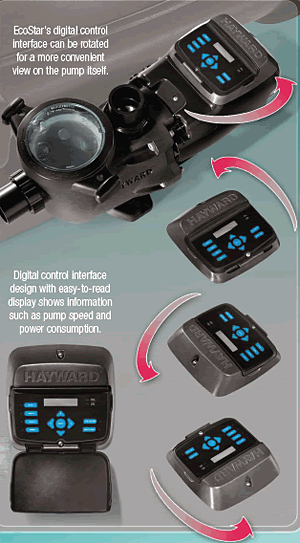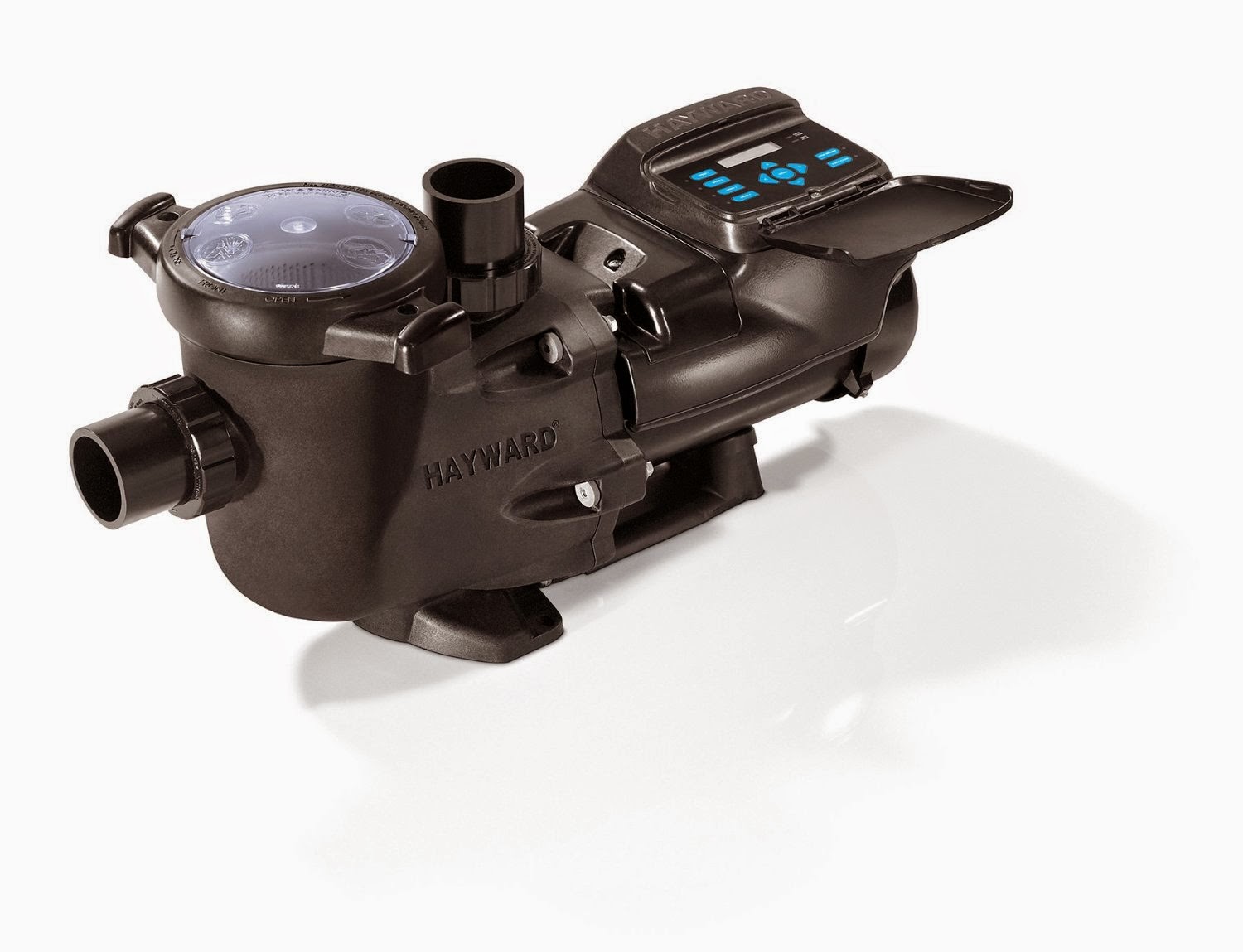 |
| Hayward Pool Pump SP3400VSP Manual |
How does my in-ground Pump operate?
Hayward in-ground pumps are self-priming centrifugal pumps. These pumps have a vacuum chamber, commonly known as a pump housing. The Hayward Pool Pump housing must be filled with water in order to create a vacuum, resulting in the pump drawing the water out of your pool or spa. The pump housing will remain full of water while the pump is on, and will remain full or partially full when the pump is shut off.
- When powered on, the motor will begin to rotate. Two-speed pumps will power on a pre-selected speed or with some controllers, it will cycle at high before changing to the lower speed. The motor spins the pump impeller, located inside the pump volute. While the motor is rotating, the tips of the impeller are hydraulically sealed inside the pump diffuser, which is responsible for self-priming.
- Self-priming can only occur if the pump has a diffuser all in ground Hayward pumps have an internal diffuser. It helps to eliminate any air approaching into the pump housing from the suction piping. As all the air is removed from the system, you will notice bubbles returning to the pool through the return fittings. A full prime occurs when the bubbles stop returning to the pool and the pump basket is full of water. The filter pressure will rise as the pump reaches full prime. The actual gallons per minute (GPM) vary with the type of pump, horsepower, pipe size, distance from pool and other restrictions within the plumbing system.
- Hayward Pool Pump self-priming pumps are very dependable and simple in design. They require a sufficient supply of water from the pool or spa, and no air in the suction lines. Air could come from a loose strainer cover, a leak in any valve, a pinhole in any suction line or a crack or loose connections in the underground piping.
 |
| Hayward Pool Pump SP3400VSP Manual |
Do I need to have a strainer basket in my pump pot?
Yes. Without the strainer basket, debris will clog the impeller in the pump volute causing the pump to cease moving water. Be sure to clean your strainer basket, as well as the skimmer baskets, so water flow is not obstructed and the pump is not overworked.
How do I winterize my pump?
To winterize a Hayward Pool pump, turn off the electrical circuit breaker that supplies power to the pump. Also, make sure that there is NO water left inside the pump. All Hayward Pool Pumps are equipped with drain plugs that will allow excess water to drain once the plugs are removed. Contact your local Hayward dealer for proper winterization procedures.
How many hours per day should I run my pump?
There are many factors to consider; bather load, gallons of water, pump horsepower, type and size of filter just to name a few. A good guideline is 8-10 hours a day. On the cooler days and early and late season, you can cut the run time down to 4-6 hours because there is usually less swimmers and cooler water requires less chemicals. In peak season, when it is the hottest, raising the run time to 10-12 hours per day will help to keep the pool clean and circulating during it's time of heaviest use.







